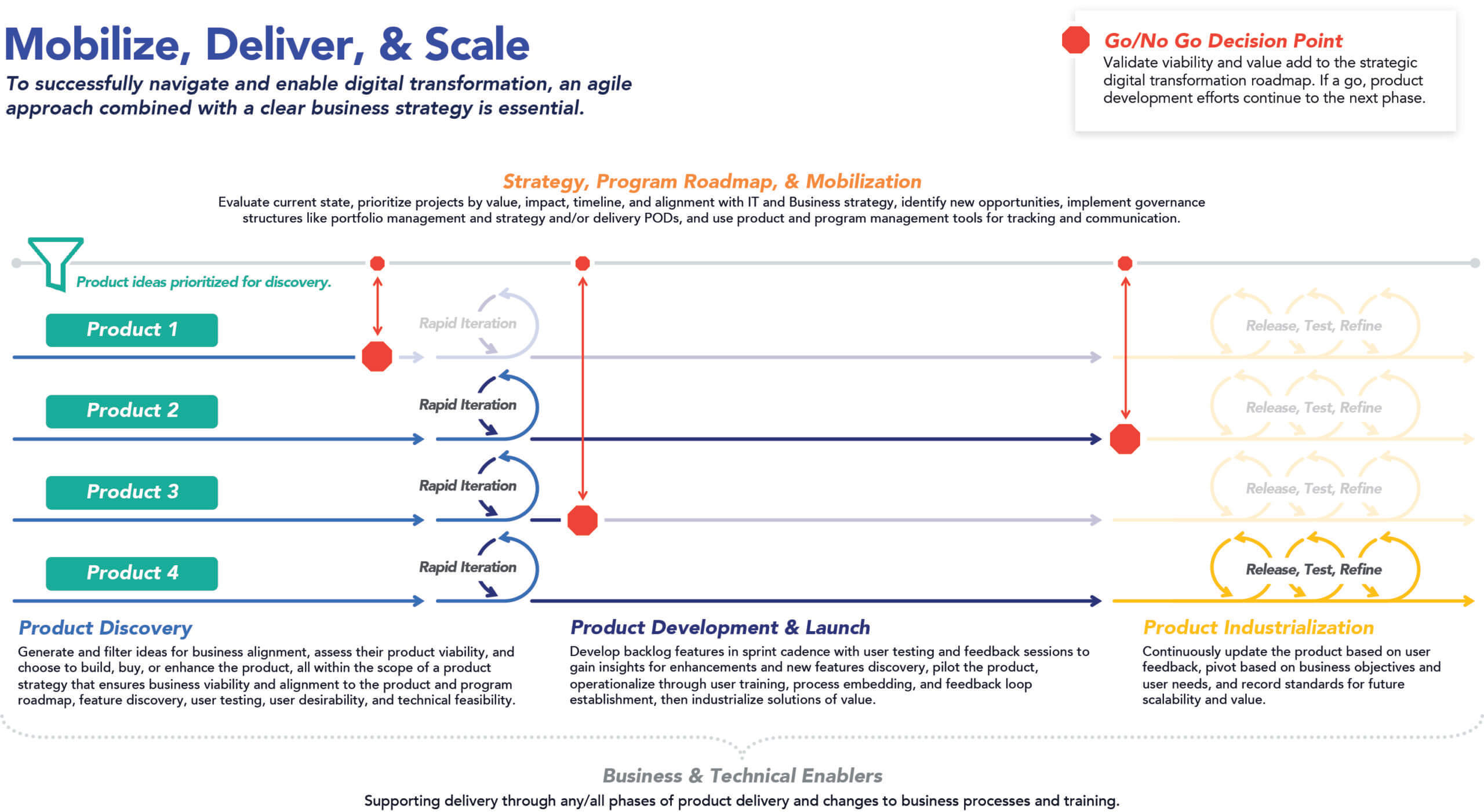Introducing Productboard Pulse. Exec-level insights into what your customers need, powered by AI.
Learn more
Perhaps you’ve heard the stat from McKinsey that 70% of digital transformations fail, but it might be easy to dismiss if you’re a product leader. After all, you and your teams are on the forefront of developing new technology.
But if you think digital transformation doesn’t have anything to do with product, think again. Consider some of the insights we uncovered in our most recent Product Excellence Report:
These answers reveal that product teams are struggling to make the shift from project to product management. Why? Because of the new people/skills/mindset, new processes (ways of working, internal collaboration, and alignment), and new technology required to successfully make this change.
Here’s the thing: avoiding digital transformation is simply not an option. Organizations that put it off for too long risk losing their competitive edge, falling behind industry disruptors, and missing out on opportunities for growth and innovation. In this environment, attracting top talent can be challenging. It’s a make-or-break scenario where organizations must adapt or face the consequences of stagnation and irrelevance.
Productboard has teamed up with Umbrage to combine our expertise in product management and digital transformation strategy to help you navigate the seven most common pitfalls organizations face on their digital transformation journey.
In this post, we’re looking at Trap #1: Lack of Clear Program Governance.
Let’s start off with a few definitions, courtesy of Kate Villanueva, Denae Foster, and Boge Sotirovski, members of Productboard’s Professional Services team.
A program is an initiative to manage a transformation in an organization. This often involves introducing a new tool and making sure it’s implemented successfully, but it can really apply to any type of transformation. A strong program can support all the activities that need to happen and rally the right people to achieve and maintain the change.
For any program to be successful, governance includes three main components:
A strong program governance framework is the foundation for a successful digital transformation journey. Without a well-defined framework in place, aligning stakeholders, setting clear objectives, and effectively communicating the ultimate goals of the initiative become much more challenging (if not impossible!). An absence of structure can lead to confusion, misalignment, and ineffective decision-making, ultimately impeding the success of your transformation journey.
To overcome this pitfall, start by establishing an effective program governance framework. You can achieve this by defining value drivers and establishing a clear vision for the desired end state. As a leader, you may also need to identify which parts of the initiative require cutting through the red tape to push through. By having a guiding vision and adding in a sense of urgency, you can quickly make informed decisions and ensure alignment with the overall business objectives.
The best way to tackle this is with a top-down approach. As a leader, your job is to focus on getting buy-in and being the active steward of transformation.

Ready to get started? Here are a few next steps you can take.
Defining your goals and who’s responsible for what helps set the stage for a successful digital transformation. It’s also just as crucial to prepare to navigate bureaucratic hurdles and possess the determination you’ll need to drive progress. And remember: regular tracking of value throughout the digital product lifecycle is key, since this enables you to quantify the value generated and identify opportunities for further enhancement. Take these steps to position your organization for a smooth digital transformation journey and achieve sustainable, long-term success.
We’ve just scratched the surface here. If you want to avoid the other traps and set your organization up for success with your digital transformation, download our eBook for even more tips and tricks.
